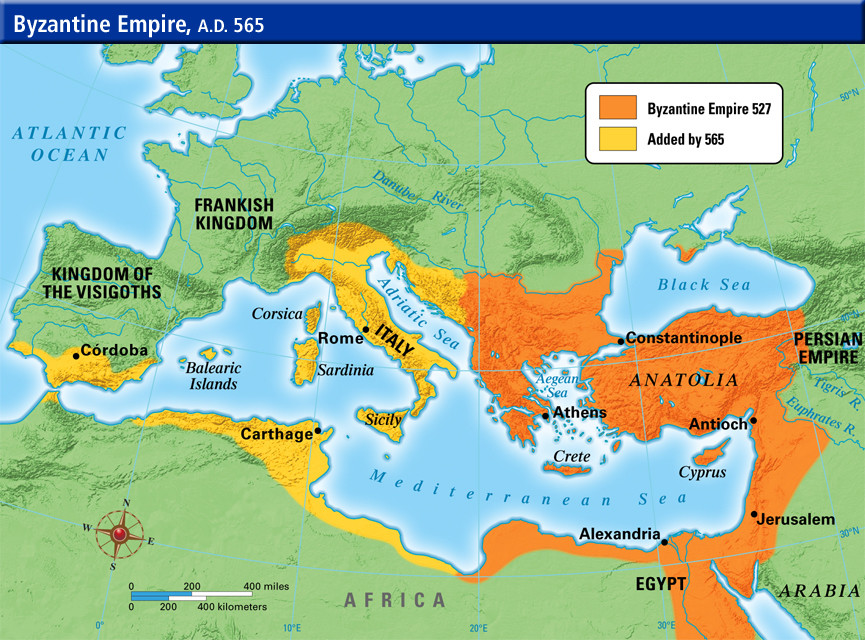
Map Of Byzantine Empire With Facts Istanbul Tour Guide
Byzantine Greek language, an archaic style of Greek that served as the language of administration and of most writing during the period of the Byzantine, or Eastern Roman, Empire until the fall of Constantinople to the Turks in 1453. During the Byzantine period the spoken language continued to
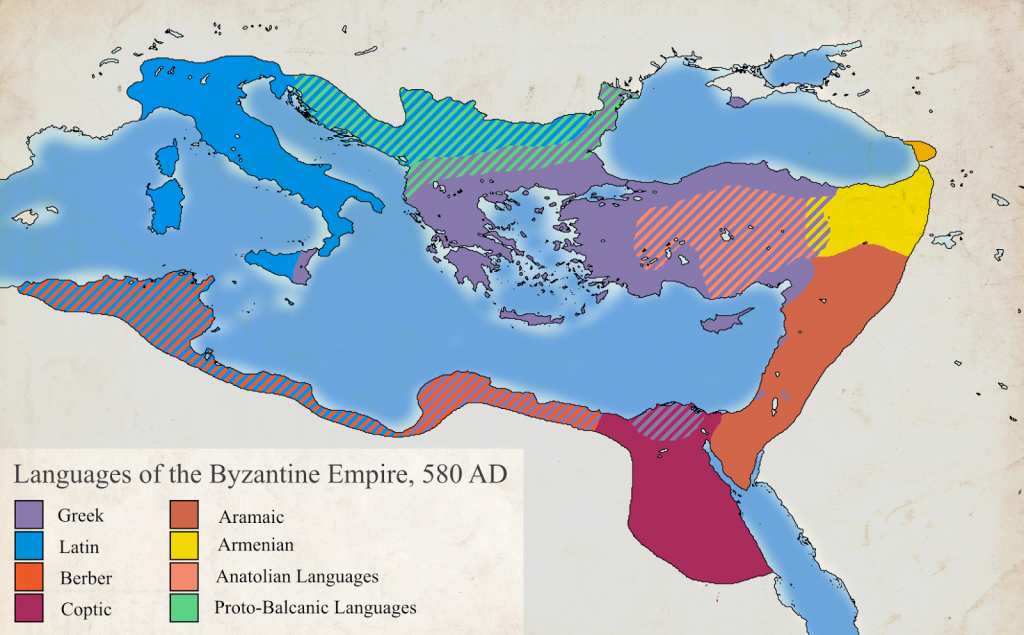
Languages of the Byzantine Empire (580 AD) Vivid Maps
In the wake of the downfall of the Western Roman Empire and the intellectual collapse of Athens, Byzantine scholars engaged in preserving the Classical Greek language and its literature.Thus they became the guardians of a vanished culture.This article presents the grammatical and literary efforts of a few of the most famous Byzantine scholars, from Arcadius of Antioch to George Choumnos.

Byzantine Government Ancient History Encyclopedia
Byzantine Empire. The Byzantine Empire was a vast and powerful civilization with origins that can be traced to A.D. 330, when the Roman emperor Constantine I dedicated a "New Rome" on the site.

Byzantine Empire The History Jar
The issue of language in the Byzantine Empire reflects many social phenomena characteristic of Byzantium: the diversity of the population, large movements of the population and the oscillation of its number or the different possibilities of absorption of the foreign population into the organism of the Empire at a certain moment, compared to the great

Byzantine Empire’s Linguistic Divisions Under Justinian I c.560CE Language Map, Infographic Map
The Byzantine Greeks were the Greek-speaking Eastern Romans throughout Late Antiquity and the Middle Ages. They were the main inhabitants of the lands of the Byzantine Empire (Eastern Roman Empire), of Constantinople and Asia Minor (modern Turkey), the Greek islands, Cyprus, and portions of the southern Balkans, and formed large minorities, or pluralities, in the coastal urban centres of the.
Language map of the Byzantine Empire circa 550 AD. r/MapPorn
Byzantine Empire. Roman Empire. Βασιλεία Ῥωμαίων ( Ancient Greek) Imperium Romanum ( Latin) 330/395-1453 b. The empire in 555 under Justinian the Great, at its greatest extent since the fall of the Western Roman Empire (its vassals in pink) The territorial evolution of the Eastern Roman Empire under each imperial dynasty until.
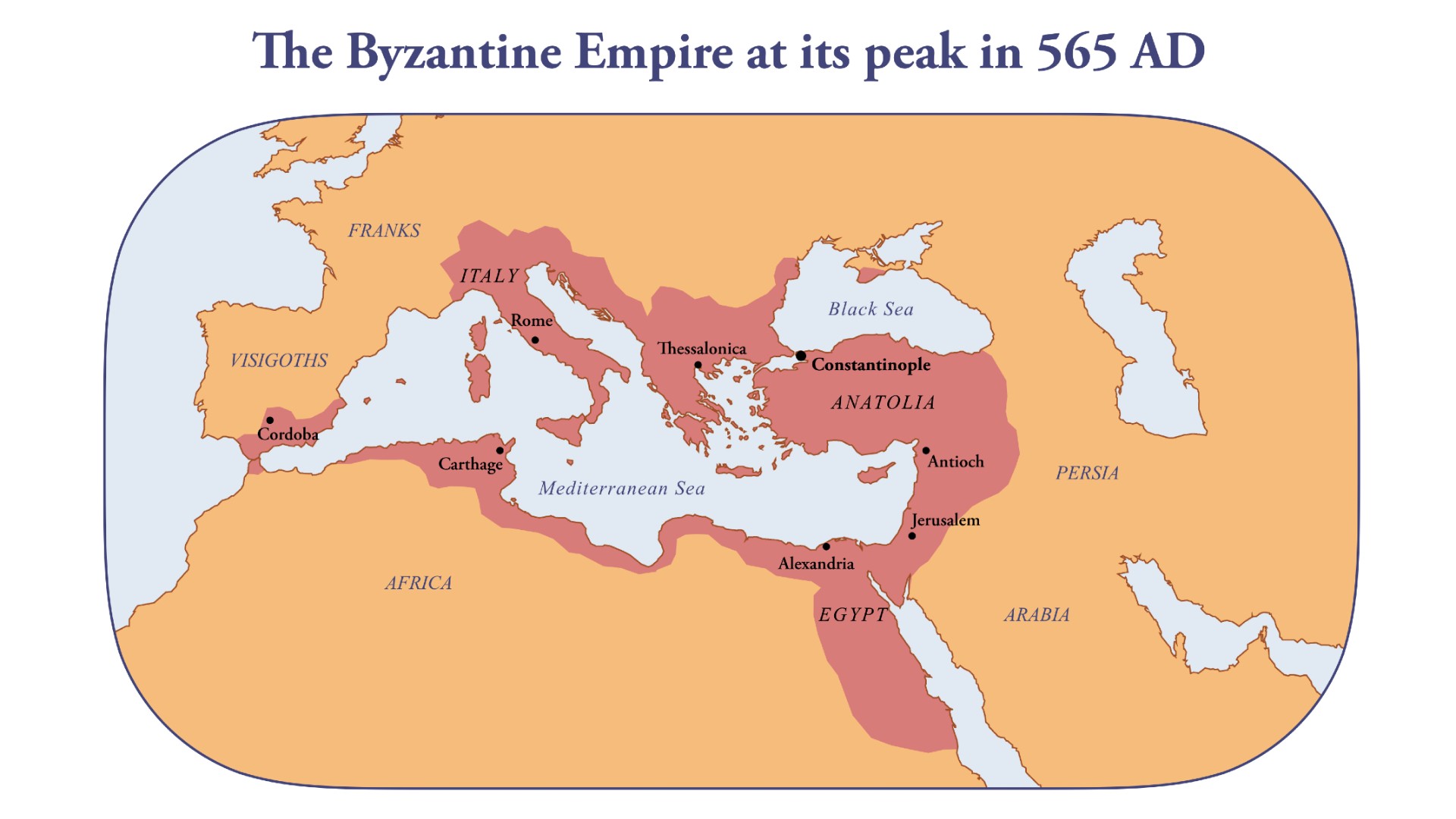
Byzantine Empire Map, history and facts Live Science
The Byzantine Empire reached its height under the Macedonian emperors (of Greek descent) of the late 9th,. Vlachs and Romanians are speaking a Romance language and they regard themselves as the descendants of the ancient Romans who conquered the South East parts of Europe. Vlach is an exonym, as the Vlachs used various words derived from.

The History of Byzantine Empire 2861453 Every Year
During this long war from 541 to 557, the Sasanians won various portions of Byzantine-controlled lands, including Armenia and Syria. The truce signed in 557 ended in 565 with the death of Justinian and the renewal of hostilities. Khosrow II was the last Sasanian king to conduct a lengthy war with the Byzantines.

Ch. 6 The Byzantine Empire
The Byzantine capital was founded at Constantinople by Constantine I (r. 306-337). The Byzantine Empire varied in size over the centuries, at one time or another, possessing territories located in Italy, Greece, the Balkans, Levant, Asia Minor, and North Africa. Byzantium was a Christian state with Greek as the official language.
Linguistic map of the Byzantine Empire c. 560AD [1115x660] r/MapPorn
Map from Wikimedia. The map above shows the Byzantine linguistic divisions of the Byzantine (Eastern Roman) Empire during the rule of Justinian I around 560 CE (AD). Justinian I attempted to restore the Roman Empire to its former glory by regaining the lost western half. The map above is what his Empire looked like towards the end of his reign.

Languages of the Byzantine Empire, 580 AD [OC] [2138x1326] r/MapPorn
The Byzantine Empire had two official languages: popular Latin and medieval Greek. Latin was abandoned by the elites around the 7th century but evolved into Italic Romance languages. Throughout its thousand years of history, various languages were spoken and/or written in the territories of the Eastern Roman Empire (or "Byzantine Empire.
:max_bytes(150000):strip_icc()/GettyImages-586343112-58a141ae3df78c47588db4a9.jpg)
Language in the Byzantine Empire
History and geography of the Byzantine Empire, the eastern half of the Roman Empire, which survived for a thousand years after the western half had crumbled into various feudal kingdoms. In the 14th century the Ottoman Turks began to encroach on Byzantine territory, and the empire fell to them in 1453.. The common Latin language, the coinage.

Extent of the Greek language spoken in the... Maps on the Web
Greek was the predominant language spoken in the Byzantine Empire (Eastern Roman). Despite Romans establishing the empire, Latin was always ranked second. The lands that Alexander the Great dominated during his conquests in Asia, the Middle East, and North Africa (around 330 BC), laid the groundwork for the Byzantine Empire, which lasted until 1453 AD.
Byzantine Emperor Justinian I clad in Tyrian purple, contemporary 6thcentury mosaic at Basilica
Medieval Greek (also known as Middle Greek, Byzantine Greek, or Romaic) is the stage of the Greek language between the end of classical antiquity in the 5th-6th centuries and the end of the Middle Ages, conventionally dated to the Ottoman conquest of Constantinople in 1453.. From the 7th century onwards, Greek was the only language of administration and government in the Byzantine Empire.
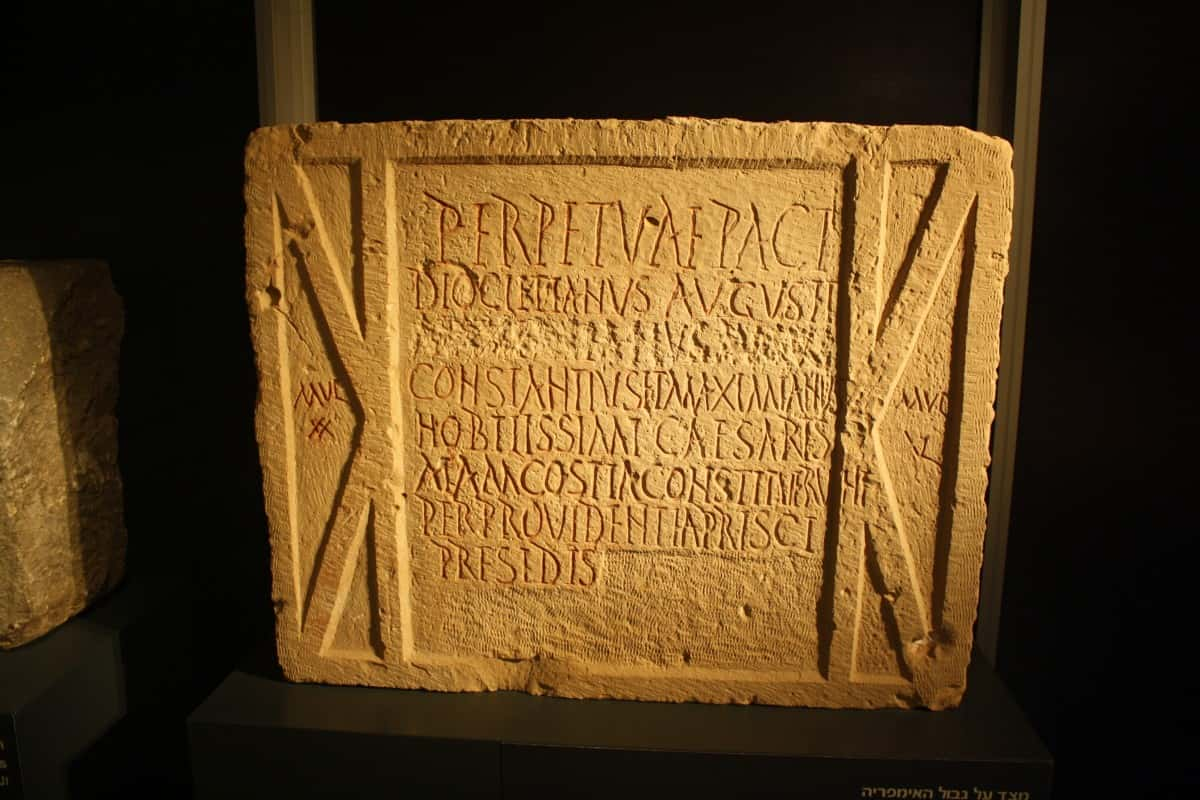
43 Imperial Facts About the Byzantine Empire
The Byzantine Empire, also referred to as the Eastern Roman Empire, was the continuation of the Roman Empire centered in Constantinople during Late Antiquity and the Middle Ages.The eastern half of the Empire survived the conditions that caused the fall of the West in the 5th century AD, and continued to exist until the fall of Constantinople to the Ottoman Empire in 1453.
What Was the Primary Language of the Byzantine Empire SaniyaminHall
This article looks at the range of languages used in the period of the Byzantine Empire's greatest extent, immediately after Justinian's wars of reconquest, from Late Antiquity and the early Byzantine Empire, to the middle and late Byzantine periods (mid-seventh century to 1453). It also discusses the evolving linguistic situation as the empire.